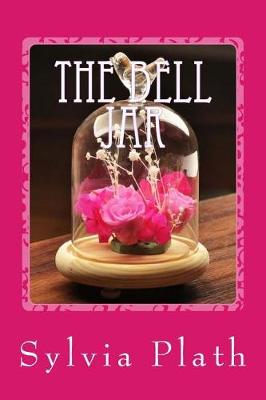Reviewed by Michael @ Knowledge Lost on
This is the seminal semi-autobiographical novel of Sylvia Plath and I’m so glad that I’ve finally read The Bell Jar. I want to say she is the female version of Charles Bukowski (even though I’ve only read Factotum); there are differences but I feel like the voice and style feel very similar. Originally published under the pseudonym Victoria Lucas to protect identities of characters she took liberties with, but more the fact it parallels Plath’s own experiences.
A bell jar is an inverted glass jar that is normally air tight used to display objects for observation, normally for scientific curiosity. For Esther the bell jar is a symbol of madness, when gripped with depression she feels like she is stuck in a jar with no real perspective to the outside world. It prevents her from making any real connections with people and sometimes she feels like she is on display (especially when she was hospitalised and received all those visitors).
What was interesting for me is that to me it never really felt like Esther Greenwood suffered from depression to begin with. I’m not saying she wasn’t really suffering but for me I think the idea was forced on her by everyone else, just because her thoughts were a little macabre and she was a little different. Almost like she was forced into her descent, because she was a little different to the norm.
Esther has an obsession with death; we get that from the very start with her fascination of newspaper headlines about executions, suicide and death. There is also the blood motif throughout the book; blood normally represents life but the constant bleeding would point towards death. When she starts to think about killing herself she talks about it at great lengths and even practices slashing her own wrists.
I think this is a novel about the regression into madness, the life experiences that normally have a positive on a person’s live, but for Esther these were partly responsible of her descent. Romance, success in education, finding work and Marriage proposals tend to upset or disorient her and in the end instead of finding reasons to live she finds how different she is to others and this cements her choice to die.
Then the book looks into the world of treating mental illness, the good and the bad. This is where the book moves into the territory similar to One Flew over the Cuckoo’s Nest, in particular a look at 1950 psychiatric treatments. In this part there seems to be three treatment types used within the book; talking, injections of insulin and then the dreaded electroshock therapy. The treatment is meant to clear the mind entirely and after her first electroshock treatment Esther was unable to think about knives. The treatment was doing more damage than good, especially to her intellect.
I went into this book thinking there might have been some psychological elements but that this was mainly a novel about feminism. It is to some extent but what I got was so much more; I was really impressed with this novel and really enjoyed the journey it took me. I feel like kicking myself for not reading this sooner. A novel about a protagonist slipping into depression is normally right up my alley but I’m a little perplexed about the ending. Overall this is a masterpiece and well worth reading.
This review originally appeared on my blog; http://www.knowledgelost.org/random/regular-segments/book-of-the-month/book-of-the-month-the-bell-jar/
Reading updates
- Started reading
- 2 August, 2017: Finished reading
- 2 August, 2017: Reviewed
- Started reading
- Finished reading
- 2 August, 2017: Reviewed
